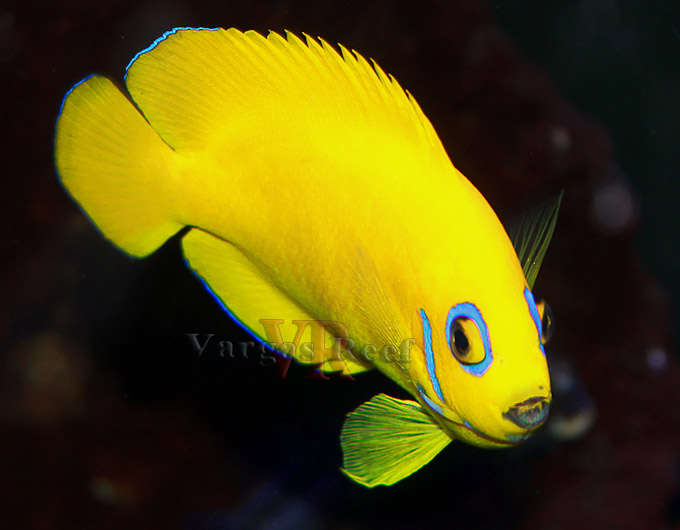We are pleased to present the first post by Tony Vargas featuring our own super rare Indian Ocean lemonpeel angelfish from Global Reef Supply. If you live in the NY area, be sure to catch Tony and many other fine speakers tomorrow at NERAC on Long Island.
Centropyge angelfish or Dwarf angels are sought after by many in the hobby because of their size and chromatic attire. In addition, they acclimate easily to a captive environment by seeking food within the aquarium and readily accept food which is offered by the aquarist.
Generally we are influenced by their colorful wardrobe and sometimes don’t understand their demands or reputation in a well established reef aquarium. While they do graze on algae most of the time they also tend to pick on corals. In a large reef aquarium (300 gallons or lager) this is not an issue, but in a small aquariums (200 gallons or smaller) this type of angelfish can wreak havoc.
Centropyge flavissima is often purchase because if it’s striking bright yellow attire and a few royal blue makings, one around the eyes, on the edge of it gill plates, on occasions on the lips, and outlined on its dorsal, anal, and caudal fin. C. flavissima is often referred to as Lemonpeel Angelfish or the True Lemonpeel Angelfish. Herald’s Angelfish (Centropyge heraldi), does not have any of the blue markings on its face and is also known as the False Lemonpeel. For a Centropyge, C. flavissima can get quite large, reaching lengths of five to five and a half inches (14 cm). They also seem to be a little more aggressive than most dwarf angelfish.
 During my recent visit to Denver for ReefStock 2012, I had the opportunity to visit Jake Adams and his many reef aquariums, plus his fish only with
During my recent visit to Denver for ReefStock 2012, I had the opportunity to visit Jake Adams and his many reef aquariums, plus his fish only with live lace rock (FOWLR) aquarium. I was taken on a tour and shown a regular Lemon Peel in his FOWLR system and in his quarantine system is one of the most interesting Lemon Peel Angelfish I have seen in some time. I am typically fascinated by the brilliant yellow this fish is adorned with—add to that the splash of bright royal blue makings.
However, the fish shown to me is different from most because of the incredible color of its eyes. Typically, you will find Lemon Peel Angelfishes with the blue markings around their eyes—not this little guy—not only does it have the blue markings but its eyes are a vivid royal blue color. Very unique, which leads us to wonder is this a true Centropyge flavissima? The other noticeable difference from most other C. flavissima are the color of it scales on both sides of its body (and the black marking behind the gills). The scales are bright yellow but are outlined in a mild gold color, giving the fish a gold-flake appearance.





